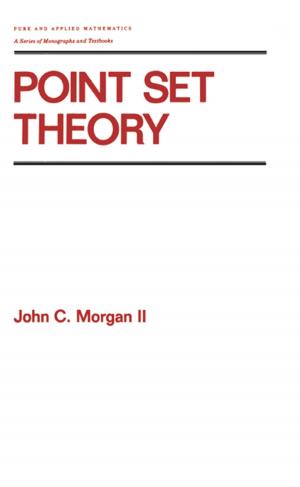Benefit-Risk Assessment Methods in Medical Product Development
Bridging Qualitative and Quantitative Assessments
Nonfiction, Health & Well Being, Medical, Reference, Biostatistics, Medical Science, Pharmacology, Science & Nature, Mathematics, Statistics| Author: | ISBN: | 9781315355016 | |
| Publisher: | CRC Press | Publication: | December 19, 2017 |
| Imprint: | Chapman and Hall/CRC | Language: | English |
| Author: | |
| ISBN: | 9781315355016 |
| Publisher: | CRC Press |
| Publication: | December 19, 2017 |
| Imprint: | Chapman and Hall/CRC |
| Language: | English |
Guides You on the Development and Implementation of B–R Evaluations
Benefit–Risk Assessment Methods in Medical Product Development: Bridging Qualitative and Quantitative Assessments provides general guidance and case studies to aid practitioners in selecting specific benefit–risk (B–R) frameworks and quantitative methods. Leading experts from industry, regulatory agencies, and academia present practical examples, lessons learned, and best practices that illustrate how to conduct structured B–R assessment in clinical development and regulatory submission.
The first section of the book discusses the role of B–R assessments in medicine development and regulation, the need for both a common B–R framework and patient input into B–R decisions, and future directions. The second section focuses on legislative and regulatory policy initiatives as well as decisions made at the U.S. FDA’s Center for Devices and Radiological Health. The third section examines key elements of B–R evaluations in a product’s life cycle, such as uncertainty evaluation and quantification, quantifying patient B–R trade-off preferences, ways to identify subgroups with the best B–R profiles, and data sources used to assist B–R assessment. The fourth section equips practitioners with tools to conduct B–R evaluations, including assessment methodologies, a quantitative joint modeling and joint evaluation framework, and several visualization tools. The final section presents a rich collection of case studies.
With top specialists sharing their in-depth knowledge, thought-provoking considerations, and practical advice, this book offers comprehensive coverage of B–R evaluation methods, tools, and case studies. It gives practitioners a much-needed toolkit to develop and conduct their own B–R evaluations.
Guides You on the Development and Implementation of B–R Evaluations
Benefit–Risk Assessment Methods in Medical Product Development: Bridging Qualitative and Quantitative Assessments provides general guidance and case studies to aid practitioners in selecting specific benefit–risk (B–R) frameworks and quantitative methods. Leading experts from industry, regulatory agencies, and academia present practical examples, lessons learned, and best practices that illustrate how to conduct structured B–R assessment in clinical development and regulatory submission.
The first section of the book discusses the role of B–R assessments in medicine development and regulation, the need for both a common B–R framework and patient input into B–R decisions, and future directions. The second section focuses on legislative and regulatory policy initiatives as well as decisions made at the U.S. FDA’s Center for Devices and Radiological Health. The third section examines key elements of B–R evaluations in a product’s life cycle, such as uncertainty evaluation and quantification, quantifying patient B–R trade-off preferences, ways to identify subgroups with the best B–R profiles, and data sources used to assist B–R assessment. The fourth section equips practitioners with tools to conduct B–R evaluations, including assessment methodologies, a quantitative joint modeling and joint evaluation framework, and several visualization tools. The final section presents a rich collection of case studies.
With top specialists sharing their in-depth knowledge, thought-provoking considerations, and practical advice, this book offers comprehensive coverage of B–R evaluation methods, tools, and case studies. It gives practitioners a much-needed toolkit to develop and conduct their own B–R evaluations.















